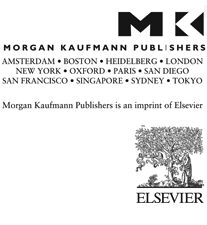About the Authors
Leo Dorst is an Assistant Professor at the Intelligent Systems Laboratory of the University of Amsterdam, The Netherlands. He obtained an MSc and PhD in the applied physics of computer vision, both from Delft University of Technology, The Netherlands. He subsequently worked on robot path planning at Philips Laboratories, NY, producing many patents which led to his shared NYIPLA Inventor of the Year Award in 2005. He has always been keenly interested in geometry and in 1997 learned about geometric algebra, which has become his main research topic. His personal hobbies are playing Go and making Lego designs.
Daniel Fontijne is a post-doc at the University of Amsterdam, currently working to apply conformal geometric algebra to markerless motion capture. He holds a Master's degree in Artificial Intelligence and a Ph.D. in Computer Science, both from the University of Amsterdam. As part of his Ph.D. study he developed Gaigen 2, the fastest geometric algebra implementation for low dimensional spaces, at the time of writing of this book. Daniel's main professional interests are in computer graphics, motion capture, and computer vision. In his spare time helps his wife Yvonne with the technical aspects of her art installations and dance performances and works on his own marker-based optical motion capture system.
Stephen Mann is an Associate Professor in the David R. Cheriton School of Computer Science and cross-appointed to the Mechanical Engineering Department at the University of Waterloo, Waterloo, Ontario, Canada. He received a B.A. in computer science and pure mathematics at the University of California, Berkeley, and has a Masters in Computer Science and Ph.D. in Computer Science and Engineering from the University of Washington in Seattle. He worked briefly at Silicon Graphics, and spent a six month sabbatical at the University of Amsterdam. His research interests are in CAGD, geometric modeling, computer graphics and the mathematical foundations of computer graphics.





